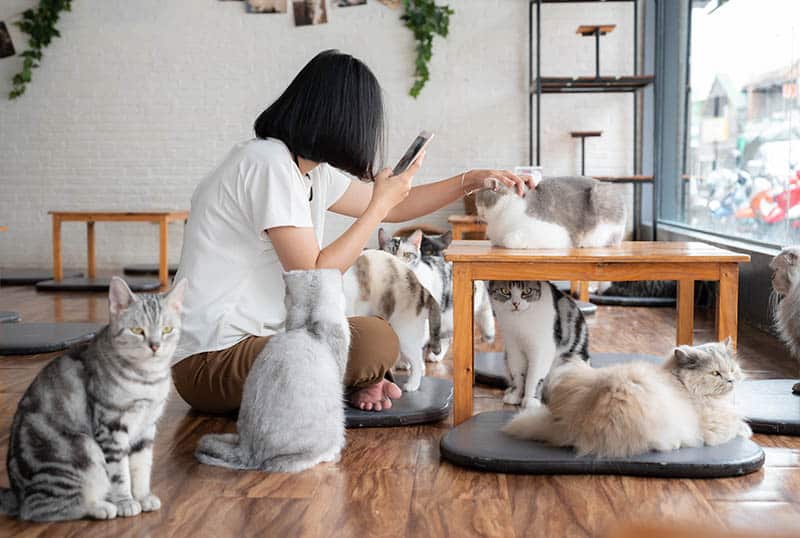A cat can bring joy and happiness to a home. So, it stands to reason that having multiple cats multiplies this joy. But, that isn’t always the case. Cats are quite independent by nature, and if a cat isn’t used to sharing its home and its resources with other feline friends, it can make for a challenging environment.
If you’re introducing a new cat for the first time, there are many factors to take into consideration, such as trying to provide space for each of your feline friends to escape to, and ensuring that there are enough resources for your pack.
Below are nine ways to help ensure that your home is well set up as a multi-cat household, potentially avoiding the hissing and spitting of an anxious moggy.
The 9 Ways to Make Your Home a Multi-Cat Paradise
1. Offer Enough Litter Trays
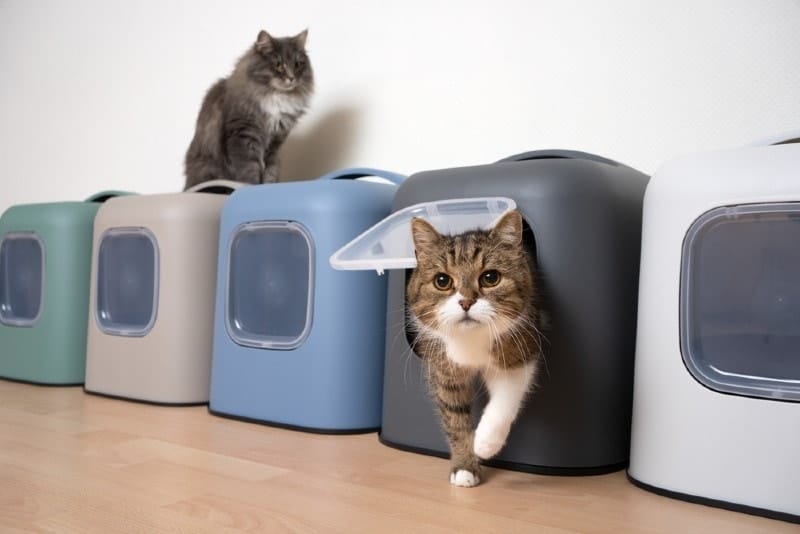
Whether your cats are kept exclusively indoors, or they are allowed outside to do their business and explore, you will need to provide litter trays inside.
The general rule of thumb is to provide one litter tray per cat, plus one extra. If you have two cats, that means providing three litter trays. If you have half a dozen cats, you are going to need to find space for seven litter boxes. You might need to get creative with the placement to ensure adequate coverage of all areas.
2. Provide Food and Water Bowls for All
As well as needing their own litter trays, your cats will also want their own food and water bowls. Rarely will cats eat from the same bowl at the same time, and whether you leave food down all day or have strict meal times, every cat will need its own bowl.
You may find that while some cats are willing to eat near other cats, some will need total solitude to be able to dine safely. And some won’t drink from water bowls that are too close to their food bowls.
Choosing the right food and water bowls for our feline companions can pose certain challenges for pet owners. The Hepper NomNom Cat Bowl provides a chic and innovative solution that supports cat specific needs, such as shallow bowls and a subtle elevation that fosters whisker relief, posture comfort, and improves digestion. It features an elegant contemporary design with a wide wrap-around tray aimed at minimizing any messes from ending up on your floor! Furthermore, this bowl is entirely dishwasher safe, so pet owners are able to spend more time with their cats instead of cleaning up after them. Discover why the Hepper NomNom Cat Bowl is right for both you and your kitty by clicking here. At Catster, we’ve admired Hepper for many years and decided to take a controlling ownership interest so that we could benefit from the outstanding designs of this cool cat company!
3. Have Different Sleeping Spots
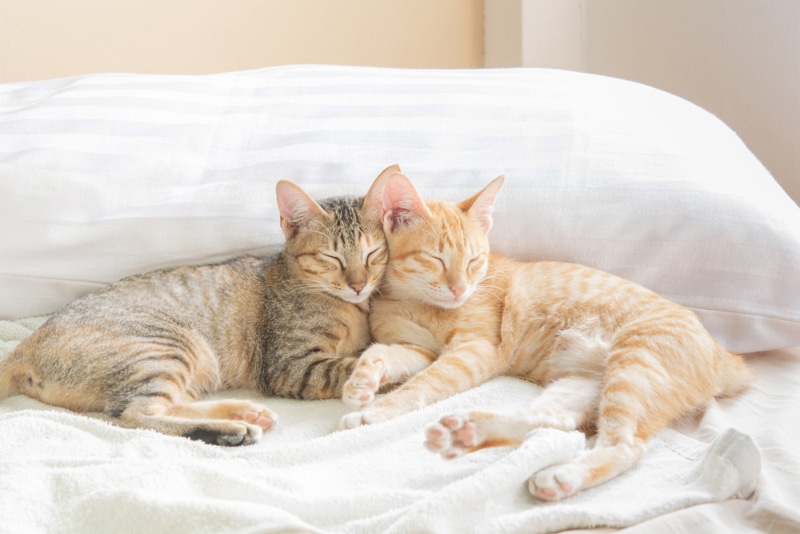
Sometimes, cats will sleep together, creating a puddle of feline fur. Other times, they want peace away from all other living creatures. Some cats will enjoy the cat caves and baskets you provide. Others will prefer the clothes drawer you left open or the warmth of the airing cupboard.
You will need to ensure that there are ample sleeping spots because cats sleep an average of 16 hours a day so there will be times when all of your cats will want to take a nap at the same time. Along with food, fighting over a favorite sleeping spot is one of the most common causes of fractious behavior in felines.
As well as offering caves, baskets, and beds, try to make sure there are ample comfortable spots to laze in the sun away from their beds. Some cats love windowsills because of the natural warmth and the show outside the window. Some do prefer the dark solitude of a closet. Others love nothing more than settling into the warm crater you leave behind on the couch.
4. Get More Scratch Posts
Scratching is an instinctive and natural behavior for our feline friends. Not only does it enable them to maintain healthy claws, but it is also a means of scenting and marking territory, and it can also be used as a form of stress relief and physical exercise.
If you aren’t providing enough scratching posts and officially sanctioned scratching surfaces, your cats will get creative and start turning surfaces like furniture, carpets, and even walls, into their scratching territory.
5. Spread Resources Around
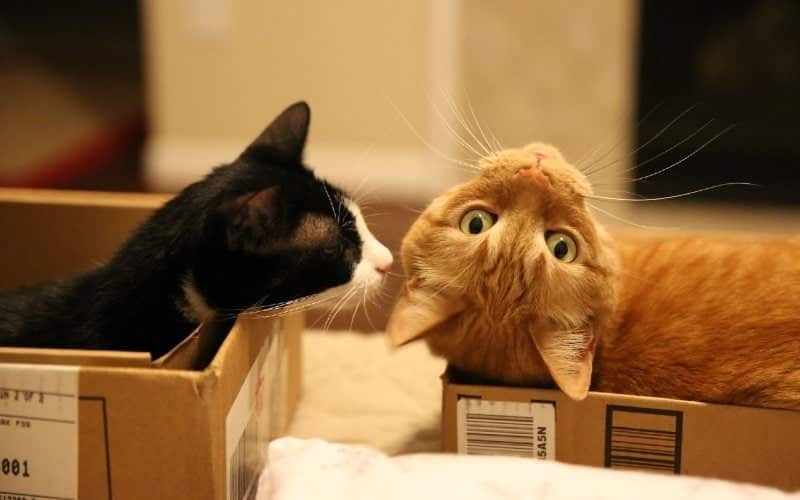
In a multi-cat household, there will need to be some sharing that goes on between cats, but minimizing this can also mean minimizing flash points. Have one litter tray per cat, plus one extra. Have a food bowl and water bowl for each cat, and at least one bed or sleeping spot for every feline household member.
You should also provide enough climbing and scratching posts, while ensuring that there are enough toys to go around, considering how cats are prone to changing their mind regarding which is their preferred toy. Resources like litter trays should not be too close to one another, and you should avoid putting litter trays next to food and water bowls.
6. Offer Lots of Toys
Playing is another natural activity. It mimics the act of hunting and while the only hunting your pet cat needs to do is to find an available food bowl, it will still enjoy the act of chasing a stuffed mouse around. You should make time every day to play with your cats, but you will also need to provide toys, including interactive toys, that they can use while you are not available for playtime.
Cats do like simple toys and many will opt for the hair bobbles and pens you leave lying around rather than the wand toy or the expensive catnip mouse you’ve bought, but you should still offer a selection for them to choose from should the desire arise. And, never leave hair bobbles unsupervised, as they are a common foreign body leading to surgery!
Finding a toy that your cat enjoys, is genuinely drawn to, and is excited to play with can be a challenge. That's why having a few options is always a good idea until you get an idea of what gets them moving. We love the Hepper Catnip Stick and Whale Kicker for different reasons. For cats who need a little encouragement in playing, the stick is packed full of organic catnip enticing enough to lure in the laziest of felines. The Whale is a great option for cats who love to hunt, pounce, and kick! Both are extremely durable, and can be cleaned and reintroduced for play days yet to come. Find out which is best suited to you below. At Catster, we’ve admired Hepper for many years and decided to take a controlling ownership interest so that we could benefit from the outstanding designs of this cool cat company!
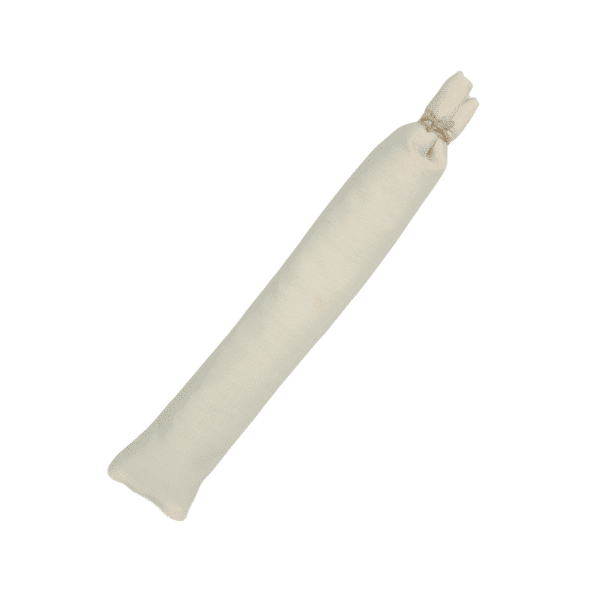
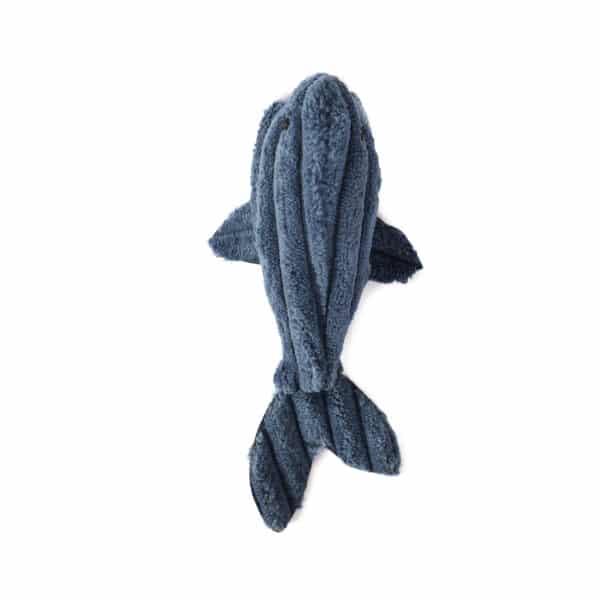
Hepper Catnip Stick
Hepper Whale Plush
Contains Catnip
Safe for KIttens
Self-play
All-Natural
Washable
7. Introduce Them Gradually

Many multi-cat households start as single-cat households and expand over time. Whether you’re introducing the second or fifth cat to your house, though, the introduction itself will set the scene for how well your cat pack lives together. Make sure you have all the resources and other items you need before bringing the new cat home. Allow the new cat and existing cats to have their own space, and perhaps start with them in separate rooms and offer brief meetings initially.
Spend time with both cats, individually, so you can build a bond with the new cat and maintain the trust of your existing cats. Don’t try and force the issue, and if there are any squabbles, separate the cats and try again another time.
8. Offer Playtime
Cats love toys and your cats will enjoy being given a good collection of their favorite stuffed mice and balls. However, what they will enjoy more than toys is someone to play with those toys. Try and put aside some time every day to spend interacting with and playing with your cats, both old and new.
Get wand toys that encourage hunting and chasing and take both of you to play. Playtime is a good time for you to bond with your cats and it can also help them bond with one another.
9. Spend Time with Every Cat

When you get a new cat, it is very easy to spend most of your time ensuring that they integrate into the home and settle in, but you shouldn’t forget about your other cats. Spend time with all of your companions to ensure the existing pack doesn’t get anxious about the new arrival and so that the new cat knows it has a place in your home.
Frequent Asked Questions
Can Multiple Cats Live Together?
Although cats are independent, most will happily live with another cat. Some will enjoy the company of others, as well as the possible entertainment that having another feline around the house will bring.
How Many Cats Is Too Many Cats?
Although there is no strict number of cats considered too many, you need to take into account the amount of space you have as well as the time you can give over to your feline population. You not only need space for the cats themselves but also litter trays, food and water bowls, and beds, as well as other items.
Conclusion
A multi-cat household can provide your cats with extra company and playmates, but it does pose certain challenges for the household and for you. Ensure you have enough space for litter trays and other resources.
While some cats will take to living with others easily, some can become anxious while some may even start resource guarding or becoming territorial with new residents in the household.
open=”no” style=”default” icon=”plus” anchor=”” anchor_in_url=”no” class=””]
- https://www.medivetgroup.com/pet-care/pet-advice/multi-cat-households/
- https://www.petplace.com/article/general/pet-care/10-multiple-cat-household-tips-for-health-and-wellness
- https://www.kingsdale.com/how-to-manage-a-multi-cat-household-tips-for-harmony
Featured Image Credit: Boyloso, Shutterstock
Contents
- The 9 Ways to Make Your Home a Multi-Cat Paradise
- 1. Offer Enough Litter Trays
- 2. Provide Food and Water Bowls for All
- 3. Have Different Sleeping Spots
- 4. Get More Scratch Posts
- 5. Spread Resources Around
- 6. Offer Lots of Toys
- 7. Introduce Them Gradually
- 8. Offer Playtime
- 9. Spend Time with Every Cat
- Frequent Asked Questions
- Conclusion

